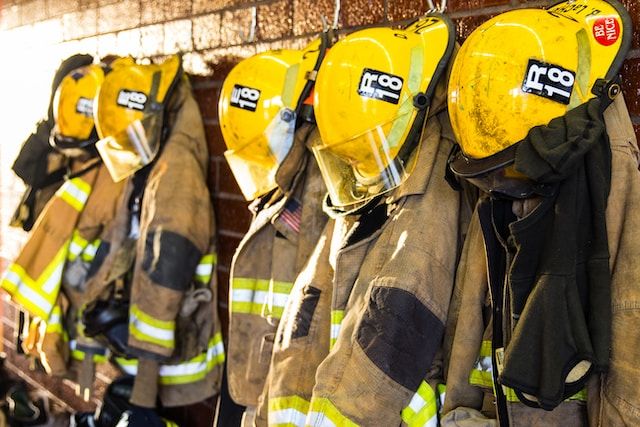
NIOSH Recently Launched a New National Firefighter Registry to Understand and Reduce Cancer for Firefighters
Firefighters sign up for the job knowing they will put their lives on the line to serve and protect the public from fires. Unfortunately, burgeoning data shows that these critical first responder communities across the country might also be facing threats to their health over the long term due to their heroic occupation. While much more information is still needed about the link between cancer and firefighting, it has been compelling enough for the National Institute for Occupational Safety and Health (NIOSH) to create a National Firefighter Registry for Cancer. This registry is the nation’s largest effort that works to explore cancer occurrences in the firefighter community nationwide.
Whether you’re a current firefighter, a retired firefighter, or a public health communicator, being aware of the ongoing research evaluating cancer incidence in firefighters is crucial. Here’s what you need to know about why this research push is needed, the various exposures that firefighters face, the potential long-term impacts on their health, and what’s on the horizon for the newly-created cancer registry.
Why Has the NIOSH Created a New Cancer Registry?
In a press release in mid-April 2023, the US Centers for Disease Control and Prevention (CDC) announced the launch of its new National Firefighter Registry for Cancer, encouraging all U.S. Firefighters to join. According to the CDC, the registry's goals are to understand and reduce cancer in the fire service.
This registry is a part of the Biden Administration’s Cancer Moonshot mission. The particular focus on the connection between firefighting and cancer is guided by the fact that firefighters have unique on-the-job exposures to smoke and hazardous chemicals that increase their risk of developing cancer.
According to the NIOSH, previous work on cancer exposure in firefighters has not included enough volunteer firefighters, female firefighters, or non-white firefighters. Therefore, more participants are needed to produce more comprehensive research.
The cancer registry is open to all professional and volunteer firefighters, so it will hopefully expand knowledge about cancer and firefighting by widening the research pool.
What Unique Exposures Do Firefighters Face On the Job?
According to the NIOSH, there are a number of factors that contribute to the exposure a firefighter faces on the job. The exposures vary depending on what type of structure is burning—for example, a physical structure such as a house releases different chemicals and contaminants than a burning vehicle. The level of risk depends on the particular material that is burning, as well as the conditions of the fire (is it enclosed or in an open outside area?) and the amount of oxygen available.
Much attention has been paid to the particular exposure of skin to polycyclic aromatic hydrocarbons (PAHs), despite protective gear and decontamination processes. According to the American Cancer Society (ACS), other toxic exposures that are connected to firefighting include known carcinogens (cancer-causing substances) like perfluoroalkyl substances (PFAS) and diesel fumes, as well as arsenic, asbestos, benzene, cadmium, formaldehyde, silica, sulfuric acid, and many others.
What Does Research Say About the Long-Term Impacts of Firefighting On Health?
According to the nonprofit Firefighter Cancer Support Network (FCSN), cancer is the leading threat to firefighter health today. Compared to the general population, a firefighter has a 9 percent higher risk of getting diagnosed with cancer and a 14 percent higher risk of dying from cancer. Some cancers are more likely to impact firefighters compared to the general population, including bladder cancer, leukemia, mesothelioma (2 times greater risk), testicular cancer (2.02 times greater risk), and esophageal cancer (62 percent higher risk of getting a diagnosis).
Furthermore, a substantial amount of research has been conducted about the impact of firefighting on other long-term health conditions as well, such as cardiovascular disease.
What’s on the Horizon for the National Fire Registry?
The NIOSH is encouraging a wide swath of U.S. firefighters to join the National Fire Registry in order to help prevent future cancer cases and to improve current knowledge about cancer risk in underrepresented groups. Growing the base of firefighters involved in research will enrich studies moving forward and help make this critical occupation safer for all.
To learn more about the NFR or to join the registry, visit NFR.cdc.gov.
Research and materials for this article were compiled, written, and distributed on behalf of the National Public Health Information Coalition. The views and opinions expressed in this blog are those of the various authors and do not necessarily reflect the official policy or position of the National Public Health Information Coalition or its members.
Sources:
[1] NIOSH Launches the National Firefighter Registry for Cancer to Understand and Reduce Cancer in the Fire Service. https://www.cdc.gov/media/releases/2023/p0417-firefighter-cance-registry.html
[2] Cancer Moonshot. https://www.whitehouse.gov/cancermoonshot/
[3] Fire Fighters and Cancer Risk. https://www.cancer.org/cancer/risk-prevention/chemicals/firefighting.html
[4] FCSN FAQ. https://firefightercancersupport.org/resources/faq/#:~:text=Firefighters%20have%20a%209%20percent,Health%20and%20Safety%20(NIOSH).
[5] Findings from a Study of Cancer among U.S. Fire Fighters. https://www.cdc.gov/niosh/pgms/worknotify/pdfs/ff-cancer-factsheet-final-508.pdf
[6] IFSI Research Supplement: Introducing the 10 Considerations Related to Cardiovascular and Chemical Exposure Risks. https://www.firehouse.com/safety-health/article/12352577/ifsi-research-supplement-introducing-10-considerations-related-to-cardiovascular-and-chemical-exposure-risks

